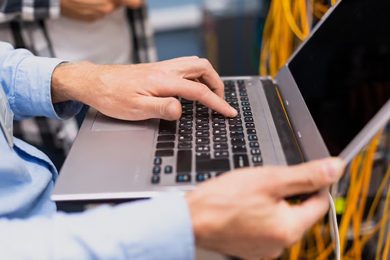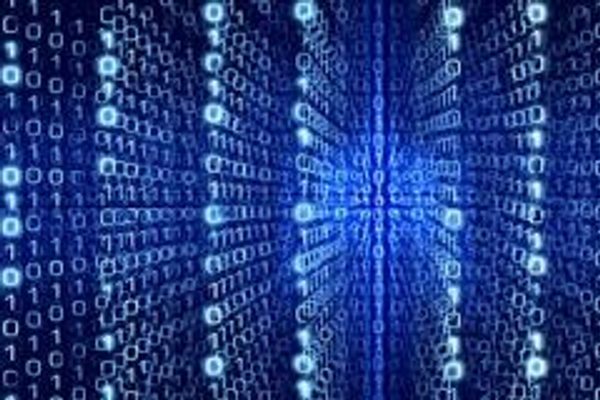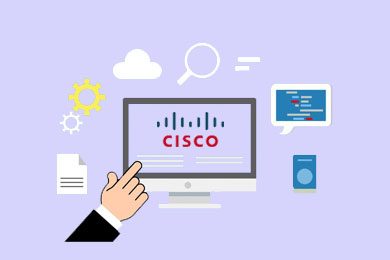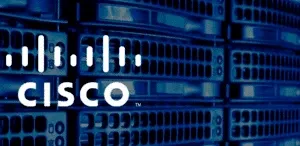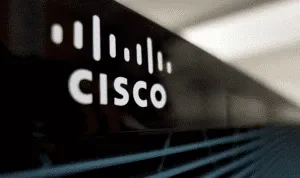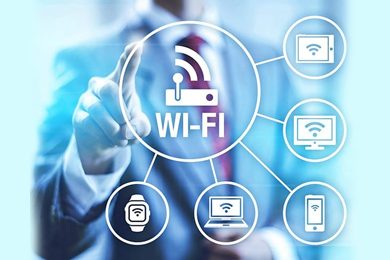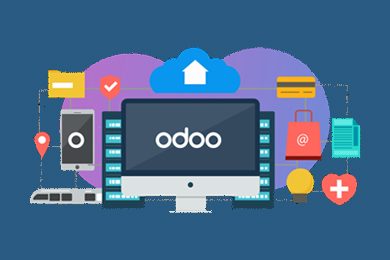This plan includes
- Limited free courses access
- Play & Pause Course Videos
- Video Recorded Lectures
- Learn on Mobile/PC/Tablet
- Quizzes and Real Projects
- Lifetime Course Certificate
- Email & Chat Support
What you'll learn?
- After completion of this course, students will be prepared and able to pass the CCENT (100-105) or ICND1 certification exam.
- Once a student completes this course, he/she will be able to implement the topics learned herein and apply it to real world scenarios.
- Completion of this course and passing the certification exam will allow students to move on to any other Cisco certification.
Course Overview
This course will take the student from A to Z to prepare and pass Cisco's newest CCENT or ICND1 (100-105) certification exam.
It was produced in a simplistic, easy to comprehend manner in order to maximize the students ability to digest, implement and execute the topics; not only in a test environment, but also in real world scenarios.
Please note that the CCENT certification is the first certification needed to advance to other certification within Cisco's CCNA track.
This means that students need to pass the CCENT to continue any other CCNA certification within Cisco. Unless the student is taking Cisco's composite exam.
Please read the "Course Goals" and "Basics" outlined herein, to understand what you should expect of this course and what you are expected to do and have before beginning this course.
The CCENT 100-105 course was produced in a very unorthodox and relaxed manner in order to drill in the topics that Cisco requires to meet their criteria and prepare to pass the certification exam.
I hope that this course meets and exceeds your expectation as a Network student and/or IT Professional.
~ Laz
Pre-requisites
- Students will need a simulator/emulator while taking this course in order to practice the labs herein.
- Simulators and/or Emulators for this course are not provided in this course. That is the student's responsibility.
- It is highly recommended that anyone taking this course should also get a CCENT book from their favorite author...making sure it is for the NEW 100-105 certification exam.
- Students starting this course should have a BASIC knowledge of Networks and the terminology used in a Network environment.
- Books used in this course: The CCENT/ICND1 Study Guide by Cisco Press, Sybex CCENT study guide by Todd Lammle & The Only IP Book You Will Ever Need!, by Lazaro J. Diaz
Target Audience
- Anyone interested in a Networking career, should take this course.
- Anyone that wants and/or needs Cisco's new CCENT certification.
- Anyone with the desire to become a Network Engineer
- Anyone that wants to brush up on the new Cisco topics for the CCENT exam.
- Anyone that needs to implement the new Cisco topics in the real world.
- Students should be aware that the CCENT and/or ICND1 (100-105) is the very first certification needed to advance to any other Cisco exam.
Curriculum 91 Lectures 07:10:57
Section 1 : INTRODUCTION TO CCENT ICND1 (100-105) COURSE
Section 2 : Introduction to TCP/IP Networking
- Lecture 1 :
- Introduction to Section
- Lecture 2 :
- Foundational Topics
- Lecture 3 :
- Overview of TCP/IP Network
- Lecture 4 :
- Summary of Section
Section 3 : Fundamentals of Ethernet LAN’s
- Lecture 1 :
- Introduction to Section
- Lecture 2 :
- An Overview of LAN’s
- Lecture 3 :
- Ethernet Physical Layer Standards
- Lecture 4 :
- Identifying Network Layer Information
- Lecture 5 :
- Summary of Section
Section 4 : Fundamentals of WAN
- Lecture 1 :
- Introduction to WAN
- Lecture 2 :
- Leased Line WAN’s
- Lecture 3 :
- The Basics of the HDLC WAN Protocol
- Lecture 4 :
- Ethernet on WAN Technology
- Lecture 5 :
- Accessing the Internet
- Lecture 6 :
- Summary of WAN
Section 5 : Fundamentals of IPv4 Addressing
- Lecture 1 :
- Introduction to Section
- Lecture 2 :
- Why is IP Addressing Important?
- Lecture 3 :
- Classes of IPv4 Addresses
- Lecture 4 :
- Private range of IPv4 Addresses
- Lecture 5 :
- Assigning IPv4 Addresses
- Lecture 6 :
- Fundamentals of IPv4 Subnetting
- Lecture 7 :
- IPv4 Routing
- Lecture 8 :
- Routing
- Lecture 9 :
- Routing Protocols
- Lecture 10 :
- Summary of Section
Section 6 : Introduction to the CLI
- Lecture 1 :
- Introduction to the CLI
- Lecture 2 :
- Accessing the CLI of a Router or Cisco Switch
- Lecture 3 :
- Switch Basic Administrative Command
- Lecture 4 :
- Router Basic Administrative Command
- Lecture 5 :
- LAN Switching Concepts
- Lecture 6 :
- The Spanning Tree Protocol
- Lecture 7 :
- Configuring Switch Interfaces
- Lecture 8 :
- Implementing VLANs
- Lecture 9 :
- Inter-VLAN Configuration
- Lecture 10 :
- Summary of Section
Section 7 : Introduction to Managing a Cisco Inter-Network
- Lecture 1 :
- Managing a Cisco Inter-Network
- Lecture 2 :
- Components of a Cisco Router
- Lecture 3 :
- Managing the Cisco Register
- Lecture 4 :
- Backing up and Restoring a Cisco Configuration
- Lecture 5 :
- Monitoring your Network
- Lecture 6 :
- Name Resolution
- Lecture 7 :
- Summary of Section
Section 8 : Managing Cisco Devices
- Lecture 1 :
- Different services of the Cisco IOS
- Lecture 2 :
- Summary of Section
Section 9 : Dynamic Routing Process
- Lecture 1 :
- Introduction to Dynamic Routing
- Lecture 2 :
- Dynamic Routing using RIPv2
- Lecture 3 :
- Dynamic Routing Protocol using EIGRP
- Lecture 4 :
- Dynamic Routing Protocol Using OSPF
- Lecture 5 :
- Summary of Section
Section 10 : Securing your Network
- Lecture 1 :
- Introduction to Securing your Network
- Lecture 2 :
- Using Hardware to Secure the network
- Lecture 3 :
- Introduction to the ACL’s
- Lecture 4 :
- Standard ACL’s
- Lecture 5 :
- Extended ACL’s
- Lecture 6 :
- Named ACL’s
- Lecture 7 :
- Remarks
- Lecture 8 :
- Monitoring ACL’s
- Lecture 9 :
- Summary of Section
Section 11 : Introduction to NAT Protocol
- Lecture 1 :
- Introduction to NAT
- Lecture 2 :
- Why do we use NAT?
- Lecture 3 :
- Types of NAT
- Lecture 4 :
- NAT Names
- Lecture 5 :
- Configuration of NAT
- Lecture 6 :
- Simple NAT Troubleshooting
- Lecture 7 :
- Summary of Section
Section 12 : Introduction to IPv6
- Lecture 1 :
- Introduction to IPv6
- Lecture 2 :
- Do we need IPv6?
- Lecture 3 :
- IPv6 Addressing and Expressions
- Lecture 4 :
- Shortened Expressions
- Lecture 5 :
- Address Types
- Lecture 6 :
- Special Addresses
- Lecture 7 :
- Configuring IPv6 Addresses
- Lecture 8 :
- IPv6 Subnetting
- Lecture 9 :
- Configuring Routing in IPv6
- Lecture 10 :
- ICMPv6
- Lecture 11 :
- Summary of Section
Section 13 : Summary of COURSE!
- Lecture 1 :
- SUMMARY OF COURSE
Section 14 : Bonus Material
- Lecture 1 :
- Introduction to Bonus Material
- Lecture 2 :
- RIPv2 Packet Tracer Lab
- Lecture 3 :
- RIPv2 VIRL Lab
- Lecture 4 :
- Collapsed Core Architecture
- Lecture 5 :
- LLDP Protocol
- Lecture 6 :
- Firewalls in a Network
- Lecture 7 :
- Wireless Access Point
- Lecture 8 :
- Wireless Controllers
- Lecture 9 :
- SLAAC LAB
- Lecture 10 :
- IOS Feature Licensing
- Lecture 11 :
- Backup and Restore
- Lecture 12 :
- Time Zone Configuration
- Lecture 13 :
- IPv6 Anycast Addresses
Our learners work at
Frequently Asked Questions
How do i access the course after purchase?
It's simple. When you sign up, you'll immediately have unlimited viewing of thousands of expert courses, paths to guide your learning, tools to measure your skills and hands-on resources like exercise files. There’s no limit on what you can learn and you can cancel at any time.Are these video based online self-learning courses?
Yes. All of the courses comes with online video based lectures created by certified instructors. Instructors have crafted these courses with a blend of high quality interactive videos, lectures, quizzes & real world projects to give you an indepth knowledge about the topic.Can i play & pause the course as per my convenience?
Yes absolutely & thats one of the advantage of self-paced courses. You can anytime pause or resume the course & come back & forth from one lecture to another lecture, play the videos mulitple times & so on.How do i contact the instructor for any doubts or questions?
Most of these courses have general questions & answers already covered within the course lectures. However, if you need any further help from the instructor, you can use the inbuilt Chat with Instructor option to send a message to an instructor & they will reply you within 24 hours. You can ask as many questions as you want.Do i need a pc to access the course or can i do it on mobile & tablet as well?
Brilliant question? Isn't it? You can access the courses on any device like PC, Mobile, Tablet & even on a smart tv. For mobile & a tablet you can download the Learnfly android or an iOS app. If mobile app is not available in your country, you can access the course directly by visting our website, its fully mobile friendly.Do i get any certificate for the courses?
Yes. Once you complete any course on our platform along with provided assessments by the instructor, you will be eligble to get certificate of course completion.
For how long can i access my course on the platform?
You require an active subscription to access courses on our platform. If your subscription is active, you can access any course on our platform with no restrictions.Is there any free trial?
Currently, we do not offer any free trial.Can i cancel anytime?
Yes, you can cancel your subscription at any time. Your subscription will auto-renew until you cancel, but why would you want to?
Instructor

333330 Course Views
14 Courses



 Tech & IT
Tech & IT
 Business
Business
 Coding & Developer
Coding & Developer
 Finance & Accounting
Finance & Accounting
 Academics
Academics
 Office Applications
Office Applications
 Art & Design
Art & Design
 Marketing
Marketing
 Health & Wellness
Health & Wellness
 Sounds & Music
Sounds & Music
 Lifestyle
Lifestyle
 Photography
Photography




